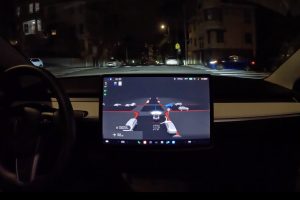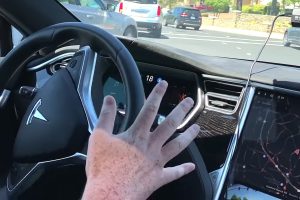Key Takeaways
- Tesla’s Full Self-Driving (FSD) is a partially automated driving system, not yet ready for unsupervised use.
- Tesla is facing financial challenges, including a 36% stock drop and a 13% vehicle delivery decline in early 2025.
- Tesla plans to launch a driverless ride-hailing service in Austin, Texas, later this year despite skepticism about FSD readiness.
- FSD relies on cameras and software for functions like automatic navigation and braking but requires driver attention.
- Concerns over Tesla’s FSD include safety issues and accidents when the system fails unpredictably.
- Experts doubt Tesla’s ability to meet its robotaxi promises, citing a lack of evidence for unsupervised FSD readiness.
- Key discussions include perspectives from Guy Mangiamele and Chris Lee praising FSD improvements, while Sam Abuelsamid doubts its safety for unsupervised use.
- Elon Musk’s political involvements and affiliations have led to backlash against Tesla, including protests and boycotts.
As Tesla continues its ambitious journey towards autonomous vehicles, it’s crucial to assess where the company stands today, the challenges it faces, and what the future might hold for its Full Self-Driving (FSD) technology. The path towards a self-driving future is marred by both technological hurdles and societal concerns, not to mention the financial and political obstacles Tesla must navigate.
The Promise of Full Self-Driving
A Vision Yet to Materialize
Tesla’s Full Self-Driving (FSD) was envisioned as a revolutionary leap in automotive technology, promising vehicles capable of complete autonomy. Despite significant advancements, true autonomous driving remains a promise rather than a reality. The FSD system is primarily an enhanced driver-assistance feature, requiring drivers to stay attentive and ready to assume control.
Key Features of FSD
- Automatic Navigation: Designed to handle highways and city streets, the FSD system navigates using a combination of cameras and sophisticated software algorithms.
- Automatic Braking: Responds to traffic lights and stop signs, showcasing its ability to adapt to immediate driving conditions.
Facing Financial and Technological Challenges
Tesla’s Financial Landscape
In recent months, Tesla has reported a distressing 36% decline in stock value and a 13% drop in vehicle deliveries. These figures highlight the financial pressure on Tesla to deliver on its promises with FSD, which could potentially revitalize investor confidence if successful.
Technological Hurdles
- Safety Concerns: While FSD often performs well in controlled environments, issues arise with unpredictable scenarios, leading to safety concerns and accidents.
- Expert Opinions: Automotive experts like Sam Abuelsamid express skepticism about Tesla’s readiness to deploy FSD in an unsupervised setting, citing a lack of tangible evidence for its safety and reliability.
The Road Ahead: Launching a New Era
Upcoming Plans in Austin, Texas
Despite skepticism, Tesla has announced plans to launch a driverless ride-hailing service in Austin later this year. The success of this initiative could serve as a crucial litmus test for Tesla’s technological claims and its market adaptability.
The Impact of Political Backlash
Elon Musk’s Political Influence
Elon Musk’s political alignments and positions have inadvertently sparked backlash against Tesla. His associations have led to protests, boycotts, and a shift in customer allegiance, influencing Tesla’s market perception and sales figures.
Public Perception and Sales Impact
- Changing Brand Loyalty: Protests and boycotts have prompted some prospective and current Tesla customers to reconsider their association with the brand, opting for alternatives.
- Market Reaction: The decline in stock and sales figures reflects broader market unrest, partially attributable to Musk’s controversial political engagements.
Stepping into the Future
Tesla’s journey to creating a fully autonomous driving system is fraught with challenges yet driven by innovation. Balancing technological advancements with safety, financial stability, and public perception remains key. As Tesla gears up for its next major steps, the coming years will be telling of its potential to lead—or lag—behind in the autonomous vehicle revolution.





